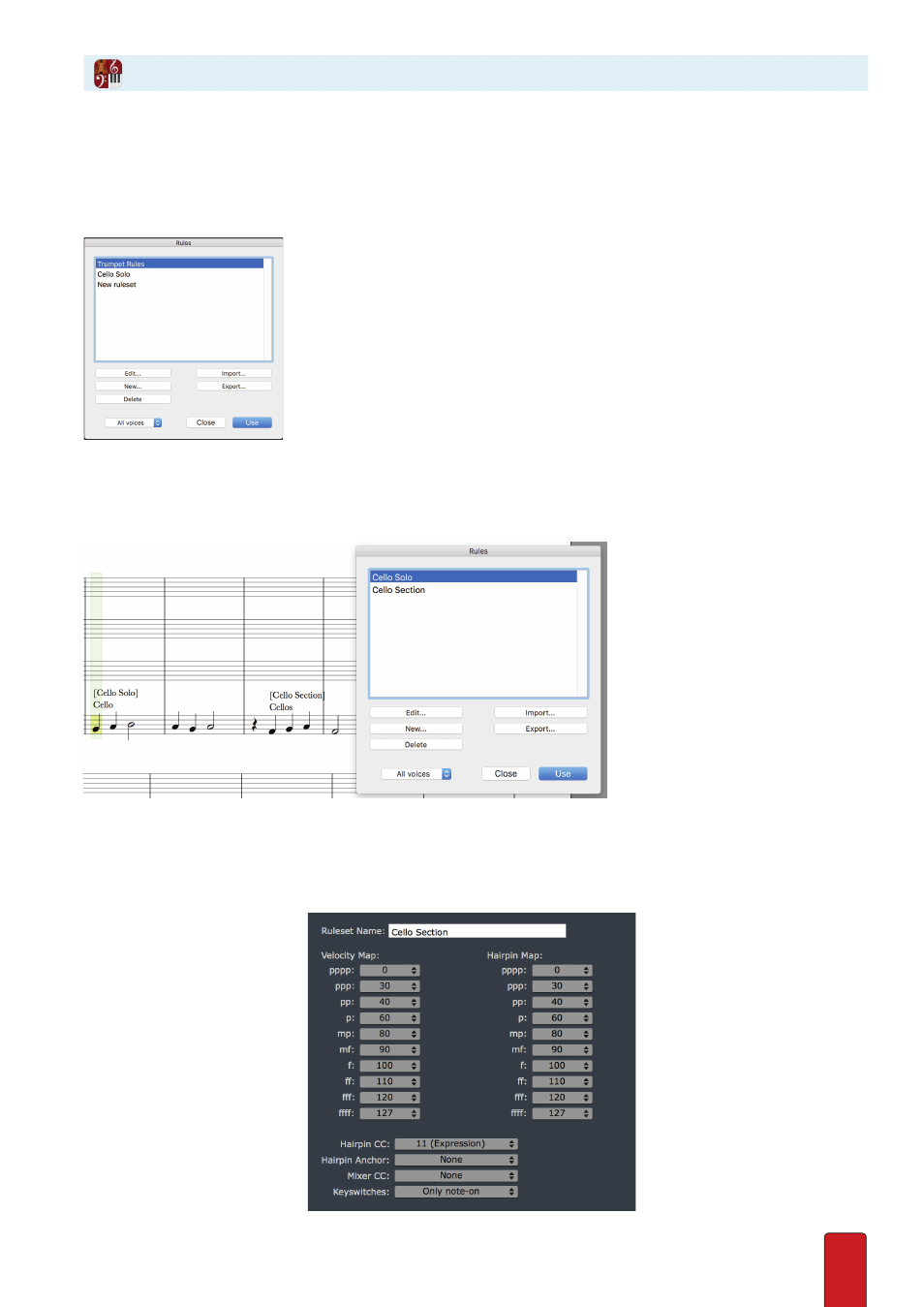Rules editor, Custom rules editor – PreSonus Notion 6 - Notation Software (Boxed) User Manual
Page 146

9.13
Custom Rule Editor
The Notion presets (outlined above) are great, if they are the libraries you actually own! Of course there are many other
VSTI’s available - but to write your own rules so they work seamlessly from your notation, requires some knowledge of
how to write XML code with proper syntax . Notion however comes with a rules editor interface that allows you to create
these rulesets without needing to know how to write XML code so you can use Notion
articulations, techniques and MIDI control data with any VSTi .
Go to Tools>Use Rules or Shift + Y to bring up the Rules dialog box . From here you can
select a ruleset to use, create a new ruleset, edit an existing ruleset, import or export a
ruleset or delete a set .
If importing an existing XML rules file, open the file first in a text editor to ensure the
dynamic map is placed
after
the plugin ID within the body of the rules (otherwise you will
see “MISSING” when you open it in the Notion Rules Editor
Use Rules
To use an existing ruleset, select the rule you wish, select which voice you wish to place it in, and click Use . The ruleset
name now appears in the cursor, and you can place it on the staff where you like, for example, to coincide with an
instrument change . You can copy and paste these markings, once in the score and they do not print .
Create / Edit a Ruleset
Click New/Edit to bring up the Rules Editor . At the top part of the editor are the dynamic maps:
Custom Rules Editor
Double click to rename Ruleset name
Velocity Map: Select
MIDI values to define
how the velocity of the
VSTi maps to the notated
dynamics in the score
Mixer CC: Use to control
volume or expression of
external MIDI devices or
devices running over the IAC
bus
Keyswitches: If keyswitches
are not being retained
on import into your DAW,
select “Automatically
send note-off”
Hairpin Map: Select
the values that will
be sent over the CC
channel below, during
a notated hairpin
Hairpin CC: select
the MIDI CC with
which to send
hairpin information
to your VSTi
Hairpin Anchor:
Set your hairpins to
begin at a specific
MIDI value, if your
VSTi does not have
crossfades - this
makes dynamic
changes smoother